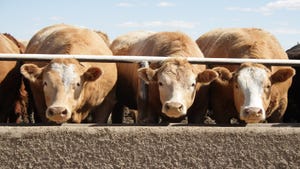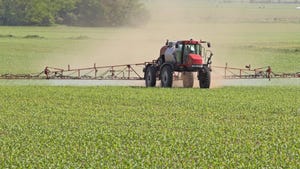
** This is the second in a third part series. Check out "The high cost of farming, part one: Inflation takes its toll" here. **
Farmers who have money to spend and need infrastructure upgrades now wonder: Will these steel and lumber supply-demand pressures ease by Christmas? Are the factors driving up prices only temporary? Should I bite the bullet and pay? Can the supply chain straighten out in six months?
Order or wait? “That’s a billion-dollar question,” says Blair Neihouser, vice president of sales at FBi Buildings. “This will be very much tied to when interest rates change — it will be a big trigger. When you think about construction of new family housing or development investments, you’ll see a big turn if interest rates go up, and the Fed might have to do that in order to keep inflation from going to an astronomic level.”
Price points are another factor. Some farmers will decide it’s not worth it and wait it out.
“People are still willing to pay,” says Mark Billstrom, president at Lester Building Systems LLC, which sells dairy and other farm buildings in 35 states. “They haven’t reached that point where it hurts enough to not pay these prices, but it’s not far away. At some point, people are going to say they’ve had enough.
“Supply chain, labor availability and how long this will go is a big concern,” he adds. “People are hard to find and hard to retain.”
In late June, lumber futures had come down off historical highs, suggesting prices could be softening. Then again, futures have dipped before only to spike back up again.
“There will be a new norm established, but where it settles out, your guess is as good as mine,” Neihouser says.
What to do now
If you’re still on the fence by mid-July, assess yield potential and project revenue through the fall. Then determine the greatest need for your operation. Whether it’s s a bin, building, tractor or combine, the cost is up from a year ago.
“To me, it’s about identifying the biggest need to make sure you’re setting up your best tax advantage as possible,” Neihouser says. “If a building is your biggest need, get it rocking and rolling by midsummer, because if you get into harvest and you hit the holidays, it might be too late. With grain prices where they are, there will be a lot of demand, so do it earlier rather than later.”
What to do next depends on how your operation is set up, says Purdue economist Jason Henderson. Watch business headlines. If you’re seeing stories about long-term demand increases, you will see companies expanding and getting back on line, he says. If it’s viewed as short term, they’re not going to expand capacity.
Also, pay attention to the housing market. “Figures on new home construction through the summer and fall will be strong signs of where construction materials for the farming sector will land by harvesttime,” he says.
Next in part three: What to ask your builder before signing a contract
Check out the first part here: "The high cost of farming, part one: Inflation takes its toll"
About the Author(s)
You May Also Like






